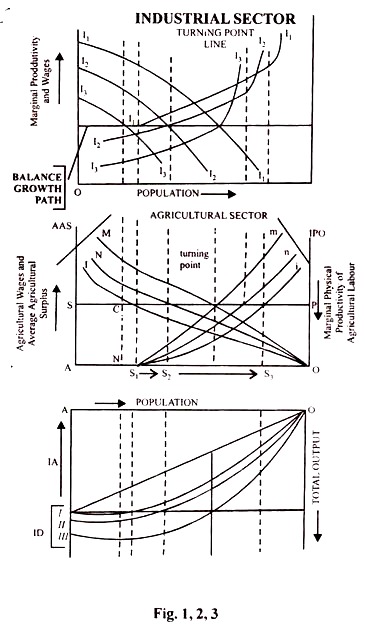The upcoming discussion will update you about the difference between Lewis model and Ranis-Fei model.
According to Rains-Fai point (end of the first phase) in Fig 1 shows the Lewis turning point i.e. the point after which the supply curve of labour in the industrial sector will turn upwards. However Lewis himself did not consider this point as the upward turning point.
For him all labour in the agriculture sector whose marginal productivity was either zero or was less than the institutional wage was available to the industrial sector at the institutional wage (or at a rate a little above it,) Fie never pointed out that as soon as the zero value labour was transferred to the industrial sector (i.e. up to the end of phase I in the present model) the supply curve for labour will start turning upwards. For him some other labour too (whose marginal productivity was less than the institutional wage, was also available at a constant wage rate.
The reason for this difference in the views of the authors of two models is that unlike Ranis and Fei, Lewis did not take into account the effect of changing terms on trade on the supply price of labour in the industrial sector. He totally ignored it.
ADVERTISEMENTS:
Fie assumed as if the wages to the transferred labour will be paid in agricultural products and as the institutional wages fixed in terms of agricultural produce, the labour transferred to the industrial sector will continue to be available at the constant wage rate i.e. that institutional wage.
Ranis and Fei, on the other hand assumed that the labour in the industrial sector will be paid, in terms of the industrial products and they had to bring the hanging terms of trade into the picture.
So we find that whereas according to Ranis and Fei, Lewis’ turning point appears as soon as phase in their model ends, according to Lewis himself, the turning point will appear at the end of the phase II. If i.e. upto the point where labour in the agricultural sector is paid institutional wages.
